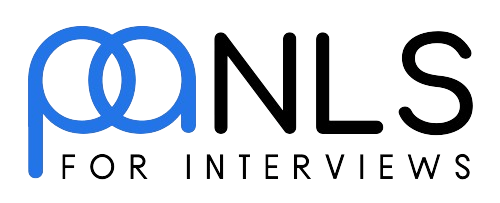How to Approach an Interview Panel: A Complete Guide for Success

Understanding how to approach an interview panel is essential in today’s competitive job market. More companies now use panel interviews to streamline the hiring process, gain multiple perspectives, and make faster, more accurate decisions. For candidates, this format can be daunting—but with the right approach, it becomes a powerful opportunity to stand out.
In this comprehensive guide, you’ll learn everything about how to approach an interview panel effectively—from preparation tips and communication strategies to expert-backed insights and post-interview etiquette.
What Is an Interview Panel?
A panel interview is a structured interview format where multiple interviewers evaluate one candidate simultaneously. This setup allows different team members—from HR to department leads—to assess your fit from various angles. Knowing how to approach an interview panel means preparing to meet diverse expectations.
Panel interviews are commonly used because:
- They allow companies to reduce bias by involving multiple perspectives.
- They save time by combining several interview rounds into one.
- They reflect team collaboration and decision-making dynamics, aligning with modern interview-as-a-service practices.
Industries where panel interviews are common:
- Technology and software development
- Government and civil services
- Healthcare and pharmaceuticals
- Higher education and research institutions
- Corporate leadership and consulting roles
Additionally, panel interviews are a growing trend in lateral hiring, where assessing adaptability and collaboration is crucial.
Why Panel Interviews Are Challenging (and Why They Matter)
Many professionals dread panel interviews because they involve multiple people evaluating you at once. Understanding how to approach an interview panel helps reduce anxiety and boosts your performance under pressure.
Why panel interviews can be tough:
- You face multiple personalities, interview styles, and question types.
- Panelists may take turns rapidly, leaving little time to regroup.
- Questions can overlap or seem contradictory.
- The group setting intensifies performance pressure.
Despite these challenges, panel interviews are crucial because they:
- Provide more accurate, balanced evaluations
- Reveal how well you handle pressure and collaboration
- Allow companies to observe your communication with multiple stakeholders
- Simulate real workplace dynamics
Mastering how to approach an interview panel gives you a significant edge in competitive hiring processes.
Tip: Consider brushing up on both technical assessment and non-technical skills to present a well-rounded profile.
How to Approach an Interview Panel: Step-by-Step Strategy
1. Research Your Interviewers in Advance
Start by gathering as much information as possible about your panel:
- Learn each interviewer’s name, title, and department.
- Check their LinkedIn profiles for recent projects or shared interests.
- Understand their role in the company and what they might care about in a candidate.
Knowing how to approach an interview panel means anticipating the perspectives and goals of each panelist.
Example: If one panelist is a product manager, another an HR representative, and a third a senior engineer, tailor your answers to resonate with all three.
2. Use the STARR Method to Structure Your Answers
The STARR technique is a proven framework to organize your responses:
- Situation: Describe the context
- Task: Explain your responsibility
- Action: Share what steps you took
- Result: Highlight the outcome
- Reflection: What you learned or would do differently
This method ensures your answers are clear and relevant to all panel members. Understanding how to approach an interview panel includes speaking in a way that is structured, logical, and adaptable to various interests.
3. Make a Strong First Impression
Your initial interaction sets the tone:
- Enter with confidence, smile, and greet each panelist individually.
- Use the panelists’ names if known to build connection.
- Dress professionally and arrive early—whether in person or online.
How you present yourself during the first few minutes speaks volumes. A key part of knowing how to approach an interview panel is recognizing that every detail counts when multiple people are observing.
4. Maintain Balanced Eye Contact and Confident Body Language
Engaging a group is different from a one-on-one conversation:
- Start by answering the person who asked the question, then gradually shift your gaze to include others.
- Sit upright, avoid fidgeting, and show enthusiasm through posture and tone.
- Use open gestures to reinforce your points.
Knowing how to approach an interview panel involves building a rapport with each panelist without favoring anyone too heavily.
5. Answer Clearly and Avoid Rambling
Clear communication is critical in a panel interview:
- Use structured answers with signposting like “First, I…” or “One example would be…”
- Avoid focusing too much on one interviewer.
- Pause briefly before answering to gather your thoughts.
- If a question is unclear, don’t hesitate to ask for clarification.
Remember, understanding how to approach an interview panel means managing time and attention wisely while delivering value-driven answers.
6. Handle Unexpected or Overlapping Questions Calmly
It’s common for panelists to ask questions in quick succession—or even simultaneously. Here’s how to manage:
- Stay composed and take a breath.
- Politely ask which question they’d prefer you answer first.
- If you’re answering one, acknowledge the other and mention you’ll address it next.
When you know how to approach an interview panel, these moments become opportunities to demonstrate emotional intelligence and composure.
7. Ask Thoughtful Questions at the End
Asking smart questions shows your interest and preparation:
- Tailor one question to each panelist’s expertise.
- Example to HR: “How does the company support employee growth?”
- Example to Technical Lead: “What are the current priorities for your team this quarter?”
- Example to the Manager: “What would success look like in this role after six months?”
By understanding how to approach an interview panel, you can ask questions that resonate and leave a strong final impression.
What to Do After the Panel Interview
Your post-interview actions matter. Here’s how to follow up effectively:
- Send a personalized thank-you email to each panelist within 24 hours.
- Mention something specific from your conversation to stand out.
- Reaffirm your interest in the role and summarize your unique fit.
- Keep it concise, professional, and authentic.
Following up correctly is part of mastering how to approach an interview panel because it shows respect, professionalism, and attention to detail.
Panel Interview vs. One-on-One Interview: What’s the Difference?
Understanding the differences helps you refine your strategy for each format.
In a panel interview:
- You’re speaking to multiple interviewers at once
- Questions come from various departments
- You need to balance your attention and adapt your tone
- Decision-making is shared across the panel
In a one-on-one interview:
- There’s more time for deep conversations
- Feedback is usually personal and subjective
- You may have multiple rounds with different people
Knowing how to approach an interview panel equips you to handle the complexity that doesn’t usually exist in solo interviews.
Common Mistakes to Avoid in Panel Interviews
Even strong candidates can fall into these traps:
- Ignoring less senior panelists and focusing only on the highest-ranking person
- Failing to engage the entire room during answers
- Giving generic or rehearsed responses without real substance
- Not preparing diverse examples that speak to different roles
- Overlooking non-verbal communication like posture, tone, or eye contact
Avoiding these errors is a key part of learning how to approach an interview panel successfully.
How Technology Is Reshaping Panel Interviews
Modern hiring tools like Panls.ai are revolutionizing how companies run panel interviews. Understanding how to approach an interview panel today also means being tech-savvy.
Key changes include:
- Remote interviews using platforms like Zoom or Google Meet
- AI-assisted scoring systems that reduce bias
- Standardized question sets and shared evaluation dashboards
- Structured decision-making based on data, not gut feeling
With platforms like Panls.ai, both interviewers and candidates benefit from increased fairness, transparency, and efficiency.
Final Thoughts: The Winning Formula
If you’re serious about landing the role, mastering how to approach an interview panel is non-negotiable. With the right mindset and preparation, you’ll not only perform well—you’ll stand out.
Remember:
- Preparation builds confidence
- Structure leads to clarity
- Connection drives engagement
Approach your panel interview as a collaboration—not an interrogation—and show the panel why you’re the right person for the job.
Frequently Asked Questions
The best preparation includes researching each panelist, practicing structured responses, and simulating group dynamics with mock interviews.
Greet each panelist individually, maintain confident body language, and express enthusiasm for the role and company.
Answer the question directly to the person who asked it, then shift eye contact and engagement to others to include everyone.
It’s okay to pause, acknowledge the challenge, and share how you’d approach finding a solution. Honesty and problem-solving go a long way.
Yes, bringing notes is fine, especially for remote interviews. Just don’t read from them—use them as quick reference points.
Practice deep breathing, maintain perspective, and remember that interviewers want you to succeed. Preparation builds natural confidence.
Absolutely. Tailor one smart question to each panelist to show genuine curiosity and personalized engagement.
Send personalized thank-you emails within 24 hours. Mention specific topics discussed to make your message stand out.
